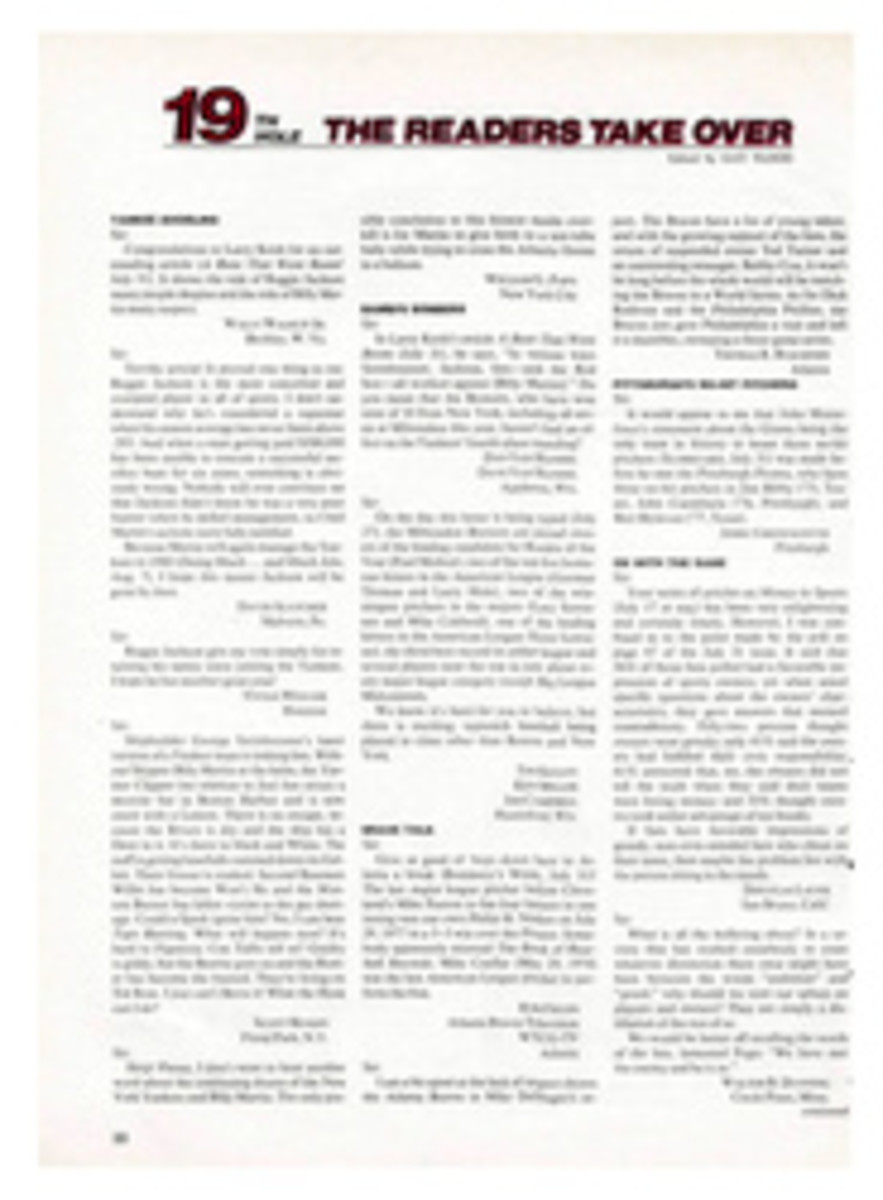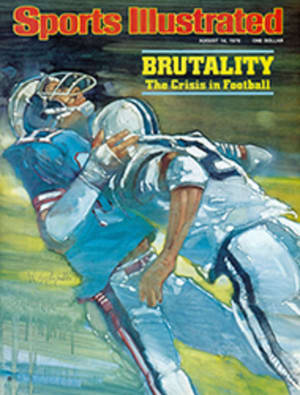
FOR BETTER AND FOR WORSE, JIMMY CANNON INFLUENCED SPORTSWRITING
It would be difficult to overestimate the influence on contemporary sportswriting of Jimmy Cannon, who died five years ago at the age of 64. Though there is plenty to dislike in his writing style, there can be no question that he ranks with Ring Lardner and Red Smith among writers who changed the face of the sports page. That is reason enough to take note of a posthumous collection of his columns, Nobody Asked Me, But...(Holt, Rinehart and Winston, $10.95), edited by his brothers, Jack and Tom Cannon.
Cannon was the paradigmatic "New York sportswriter." He was born in 1909 in Greenwich Village, quit high school after less than a year and landed a job in the uptown classified advertising office of the Evening World. Soon he joined the Daily News as a copyboy, and there the classic rags-to-riches story began: Cannon wrote a story that impressed the city editor, who gave him a $2.50-a-week raise (to $17.50) and sent him into the streets as a general assignment reporter.
He moved up quickly from covering murder cases to writing one of the country's first radio columns to banging out a political column from Washington. It wasn't until the mid-'30s that he began writing sports, and that was interrupted in 1941 by service in World War II as the Third Army correspondent for Stars and Stripes.
After the war Cannon's sportswriting career flourished. He was given a column in the New York Post; in 1959 he moved over to the Journal-American and became nationally syndicated. Now his punchy, breezy, streets-of-New York prose could be read by sports fans from coast to coast; more important, it could be read by sportswriters, who latched onto the Cannon style as if it had been handed down from Heaven.
That style was compounded of several elements. Cannon learned a lot from his two idols, Ernest Hemingway and Damon Runyon. He had a strong streak of beery Irish sentimentality, no doubt refined by the wee-hours boozing for which he was famous until a stomach operation permanently disbarred him in the 1940s. He also had a remarkably sharp ear and eye, and an instinct for cutting to the quick of a character or situation.
The columns in this collection are fairly representative, which is to say that the good ones are tough and penetrating while the bad ones are maudlin and manipulative. The book seems to have been compiled as a valedictory; it contains a number of columns in which Cannon summarized his views of one sports celebrity or another, and too few of the workaday, covering-the-game columns at which he so often excelled.
It can be argued that when Cannon was at his best nobody was better, and he was at his best covering boxing. Though he thought the fight game squalid and barbaric, he was drawn to the odd mixture of people it attracts and he found its occasional noble moments—Sugar Ray Robinson at work, the Zale-Graziano fights, the careers of Joe Louis and Ezzard Charles—positively thrilling. He was especially fascinated by the hangers-on, who inspired his most successful pieces. Here he is, for example, on fight managers:
"The fight manager wouldn't fight to defend his mother. He has never participated in a crime of violence but he lives by the code of the underworld. He imitates mob guys in his dress, speech and manners. He accuses all inefficient pugs of being yellow; he has been a coward in all the important matters of his life. He is cranky and profane when he talks to the kids he manages but he is servile when addressing the gangster whom he considers his benefactor. He has cheated many people but he describes himself as a legitimate guy at every opportunity."
Cannon could say a lot in a few words. On Satchel Paige meeting the press: "It is the small talk of a witty man used to killing time with other men on buses or trains.... He understands how to keep a good day going because he has been cheated out of a lot of them." On Babe Ruth at his Yankee Stadium farewell: "The tan on his face seemed unnatural because he didn't look like a man who had been out in the sun." On Floyd Patterson: "Patterson is an urban hermit who seeks solitude in isolated gyms, like an energetic monk practicing vows of silence and loneliness."
But Cannon could also be mawkish, jerking for every tear: "It was all wrong for Ezzard Charles. The luck is still bad and the fight mob is throwing a dinner for him in Chicago because he is terribly sick, and in trouble. At 47 it comes down to pain and wondering about money for the doctors and the family and guys standing up at a table and talking about the great days when he was the heavyweight champion of the world."
Unfortunately, that's what a lot of the Cannon imitators picked up on; part of his legacy is that too many sportswriters try too hard to transform the world of games into a Greek tragedy. The role of tough-guy-with-a-heart-of-gold is boring; it's too bad Cannon gave it legitimacy in sports journalism. But imitators are usually far less interesting than their models; for all his flaws, Jimmy Cannon was almost always interesting, and this collection is an appropriate tribute to his career.

